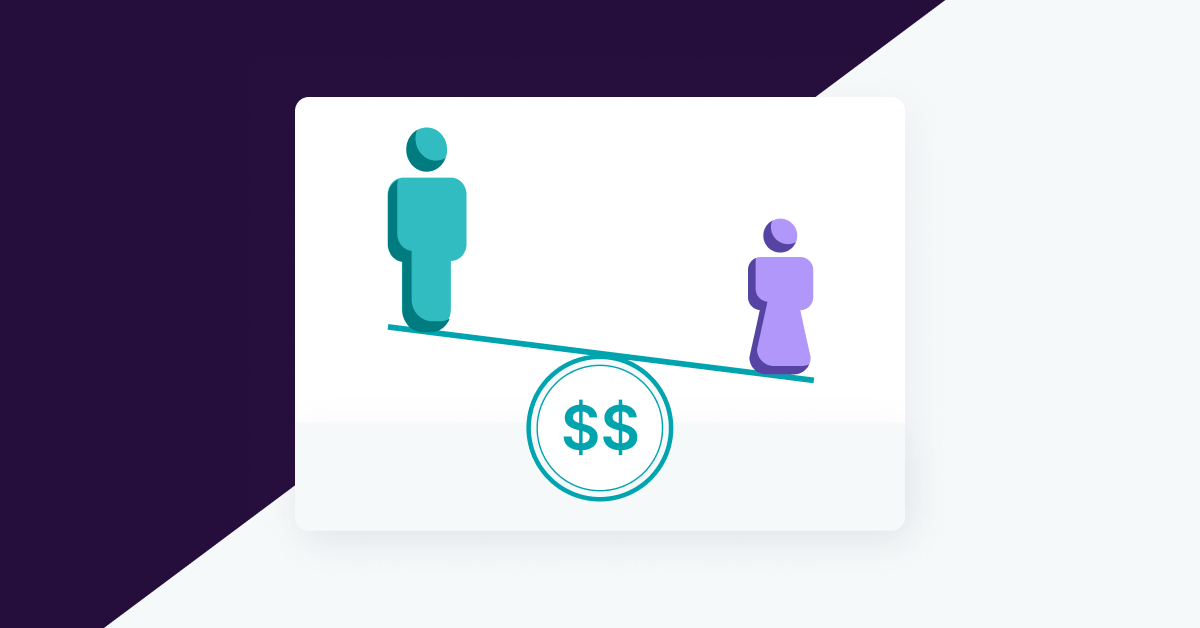To effectively navigate conversations around workplace equity, it’s important to distinguish between often-confused terms. “Pay disparity” is a key phrase in this dialogue, but how does it differ from pay gaps? Below we demystify these terms and their role in the broader conversation on workplace equity.
Pay disparity definition
Pay disparity, or pay inequity, occurs when employees performing similar or comparable work are paid differently for reasons that aren’t justified by neutral, job-related factors such as their skill, tenure, qualifications, or working conditions.
Here’s an example: A group of engineers perform similar work in similar working conditions. After taking into account legitimate reasons employees in this group might be paid differently — such as experience and tenure — is there still a statistically significant difference in the pay between the men and women in the engineering group? If yes, that’s a gender pay disparity.
Pay disparities can reflect patterns of inequity within a company’s compensation practices or culture. Pay disparities based on gender, race, or other protected categories are illegal based on employment discrimination laws, posing a significant legal risk for organizations if they do not take steps to analyze pay equity and remediate any identified differences. Beyond legal risk, companies are also addressing pay disparities because of the impact perceived pay fairness has on employee trust and talent retention.
Pay disparity vs. pay gaps
A pay gap is a measure of the overall differences in earnings between two populations — such as the difference between the compensation of men and women or between different racial groups within a population. The unadjusted pay gap is the comparison of average earnings typically between genders or racial groups without accounting for factors like experience, tenure, or education.
Pay disparities are only one contributing factor to unadjusted pay gaps, which also have root causes in opportunity inequity — when employees don’t have equitable opportunities to advance. For example, a company could achieve gender pay equity in role-to-role comparisons, but still have an overall gender pay gap across the company due to having more men than women in higher-paying positions (which can stem from inequitable hiring, promotions, and retention).
Read: What is the Difference Between ‘Pay Equity’ and the ‘Pay Gap’? >
Efforts to reduce pay disparities
The U.S. has had federal laws directed towards reducing pay disparities since the Equal Pay Act (EPA) of 1963 and Title VII (1964) were signed into legislation. ‘Equal pay for equal work or work of equal value’ has been a right in the European Union since 1958. Recently, pay equity laws have been growing stronger around the globe: since 2016, several U.S. states have enacted more robust pay equity laws, salary history bans, and pay scale disclosure laws, a movement mirrored in the EU and other countries. Now, all 50 U.S. states prohibit pay discrimination, with similar trends in salary transparency and history bans spreading worldwide.
Companies have significant control over their ability to achieve pay equity and are increasingly being held accountable for doing so. Assuming the organization has the budget to adjust compensation, pay disparities are relatively simple to solve.
Companies should conduct a pay equity analysis using sound statistical methodology, then adjust pay disparities for underpaid employees. Pay equity software like Syndio’s leading PayEQ ® solution gives compensation teams more control over their pay equity analyses so they can conduct them more frequently, along with deeper insights so they can address root causes in pay policies to prevent new disparities from arising.
Dive deeper: How to build a pay equity plan >
Finding the right solution
According to HR analyst Josh Bersin, companies that leverage specialized technology for pay equity are 3.2 times more likely to foster employee engagement and retention and seven times more likely to attract talent.
But not all pay disparity software is equal. Most pay equity tech can tell you what pay disparities you have and who is impacted, but fail to pinpoint why those disparities are happening in the first place.
So what capabilities should you prioritize to ensure you get maximum value out of your investment? Whether you’re looking to complete your first technology-driven pay disparity analysis or hoping to revamp your existing process, it’s important to ask the right questions when evaluating your options.
To help you do that, get the Pay Equity Software Buyer’s Guide for key features, an RFP template, and the evaluation checklist you need to start resolving pay disparities for all of your employees.
The information provided herein does not, and is not intended to, constitute legal advice. All information, content, and materials are provided for general informational purposes only. The links to third-party or government websites are offered for the convenience of the reader; Syndio is not responsible for the contents on linked pages.


